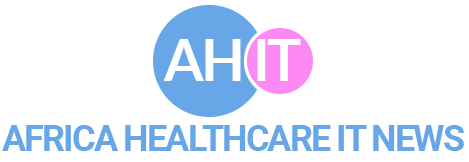Spread the love
Hypertension is one of the greatest epidemics threatening the health of people in low and middle-income countries. For patients struggling with high blood pressure in countries with limited access to health care, the key to improving health may be as simple as a phone call.
New University of Michigan research evaluated the impact of automated calls from a U.S.-based server to the mobile phones of patients with hypertension (high blood pressure) in Honduras and Mexico. The program was designed to be a low-cost way of providing long distance checkups and self-management education.
Patients were provided with home blood pressure monitors and reported information about their blood pressure, medication use and symptoms during the weekly automated calls. During the calls, they received tailored health information from U-M via a cloud computing system.
Compared to patients receiving usual care, those who received the weekly 12-minute calls for six weeks were more likely to say that they understood how to take their medication, experienced fewer depressive symptoms and were more satisfied with care. Blood pressures decreased significantly, especially among patients with the greatest need for education about their hypertension management.
“What some people may not realize is that the biggest health threats in less-developed countries aren’t just communicable diseases like HIV. Chronic disease and high blood pressure are the biggest killers,” says lead author John D. Piette, Ph.D., professor of internal medicine at the U-M Medical School.
“Our work shows that mobile technology can be used to help people living in poor areas of the world that don’t have the infrastructure for health services. It was gratifying to see how something based at U-M could give these patients in remote areas information they needed to manage their hypertension.”The results were published in Telemedicine and e-Health.
Despite high poverty levels in both Honduras and Mexico, up to 70 percent of the population has a cell phone – making it an instrumental tool to improve access to health monitoring and information, Piette says. The telehealthcare model had the most successful outcomes among people who had limited literacy – averaging just six years of formal education – and who lived on an average income of $2,900 a year.
Patients were provided with home blood pressure monitors and reported information about their blood pressure, medication use and symptoms during the weekly automated calls. During the calls, they received tailored health information from U-M via a cloud computing system.
Compared to patients receiving usual care, those who received the weekly 12-minute calls for six weeks were more likely to say that they understood how to take their medication, experienced fewer depressive symptoms and were more satisfied with care. Blood pressures decreased significantly, especially among patients with the greatest need for education about their hypertension management.
“What some people may not realize is that the biggest health threats in less-developed countries aren’t just communicable diseases like HIV. Chronic disease and high blood pressure are the biggest killers,” says lead author John D. Piette, Ph.D., professor of internal medicine at the U-M Medical School.
“Our work shows that mobile technology can be used to help people living in poor areas of the world that don’t have the infrastructure for health services. It was gratifying to see how something based at U-M could give these patients in remote areas information they needed to manage their hypertension.”The results were published in Telemedicine and e-Health.
Despite high poverty levels in both Honduras and Mexico, up to 70 percent of the population has a cell phone – making it an instrumental tool to improve access to health monitoring and information, Piette says. The telehealthcare model had the most successful outcomes among people who had limited literacy – averaging just six years of formal education – and who lived on an average income of $2,900 a year.
Hypertension is a leading cause of the global epidemic of cardiovascular diseases and is a top health issue in Latin America where more than 100 million adults are hypertensive and rates among men are the highest in the world. Two-thirds of people with high blood pressure live in low and middle income countries.
“Our work provides evidence that this model of telehealthcare can deliver meaningful services to patients in remote areas of the world lacking access to health services,” says Piette, who is also senior research scientist with the Veterans Affairs Ann Arbor Healthcare System. “We hope to further study how this model helps with other conditions such as diabetes or depression.”
Source: University of Michigan Health System
“Our work provides evidence that this model of telehealthcare can deliver meaningful services to patients in remote areas of the world lacking access to health services,” says Piette, who is also senior research scientist with the Veterans Affairs Ann Arbor Healthcare System. “We hope to further study how this model helps with other conditions such as diabetes or depression.”
Source: University of Michigan Health System


